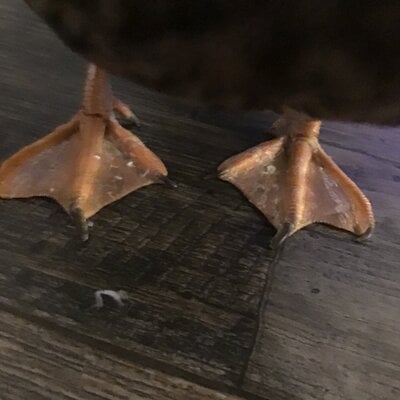Kerya
Songster
Hello,
This is my first thread here and I’d like to say that I’m new to ducks and any poultry in general.
My duck is a female mallard, about 5 and a half months old.
Today I noticed her feet look a bit strange, her back toes in particular seem to be a bit longer, dryer and curve inwards?
I’m just wondering if I should be worried. (She lets me touch her feet and seems to be in no pain).
I’m not sure if it helps, but about 2 weeks ago we trimmed her nails. Molly also gets baths every day and for as long she wants.
I included a picture of her feet after a bath and with Vaseline all over, and little feathers + ducky dandruff. Her feet have been the most dry ever today.
Hopefully this helps, thank you!
This is my first thread here and I’d like to say that I’m new to ducks and any poultry in general.
My duck is a female mallard, about 5 and a half months old.
Today I noticed her feet look a bit strange, her back toes in particular seem to be a bit longer, dryer and curve inwards?
I’m just wondering if I should be worried. (She lets me touch her feet and seems to be in no pain).
I’m not sure if it helps, but about 2 weeks ago we trimmed her nails. Molly also gets baths every day and for as long she wants.
I included a picture of her feet after a bath and with Vaseline all over, and little feathers + ducky dandruff. Her feet have been the most dry ever today.
Hopefully this helps, thank you!





 The rear toes sound normal to me and nothing to worry about. A ducks feet are similar to a persons hand and can get dried out also, so it does help to keep them moisturized. Best of luck.
The rear toes sound normal to me and nothing to worry about. A ducks feet are similar to a persons hand and can get dried out also, so it does help to keep them moisturized. Best of luck. 
